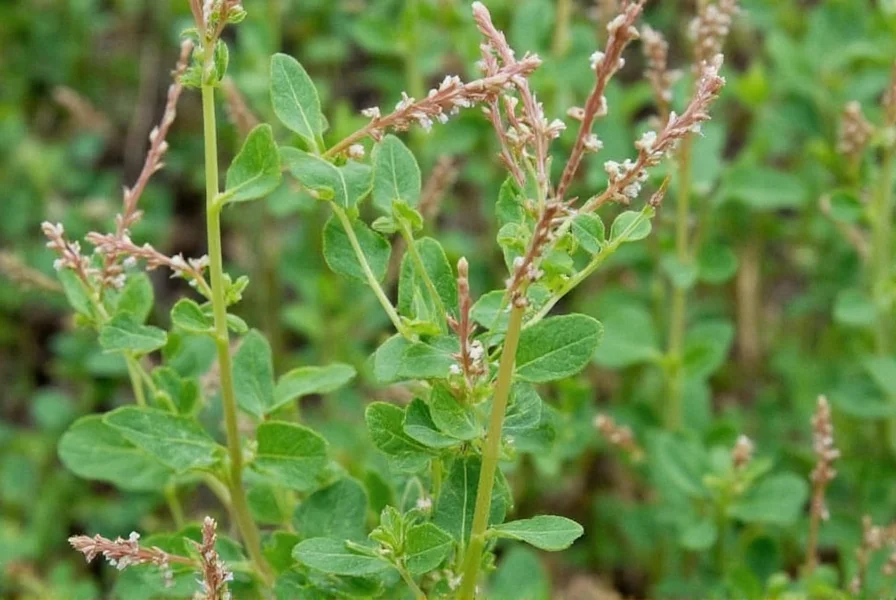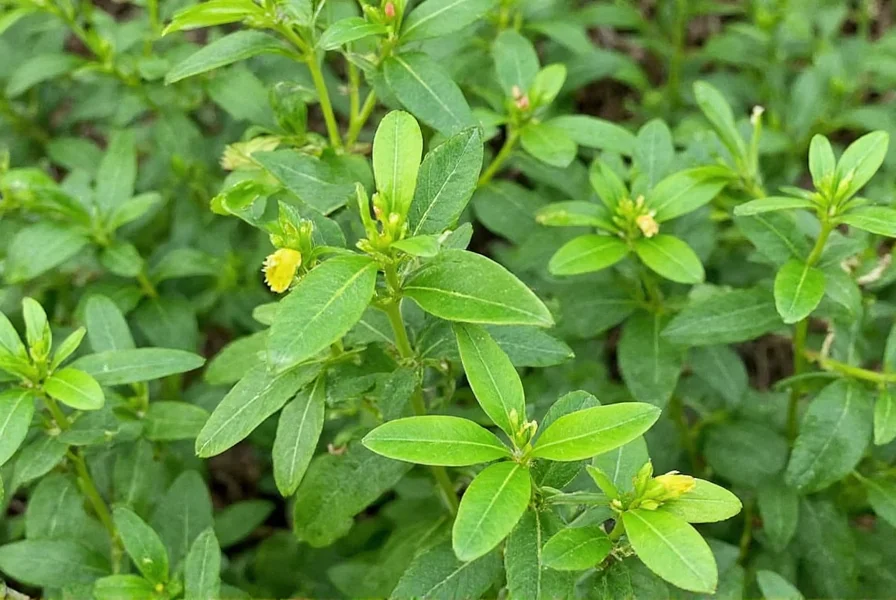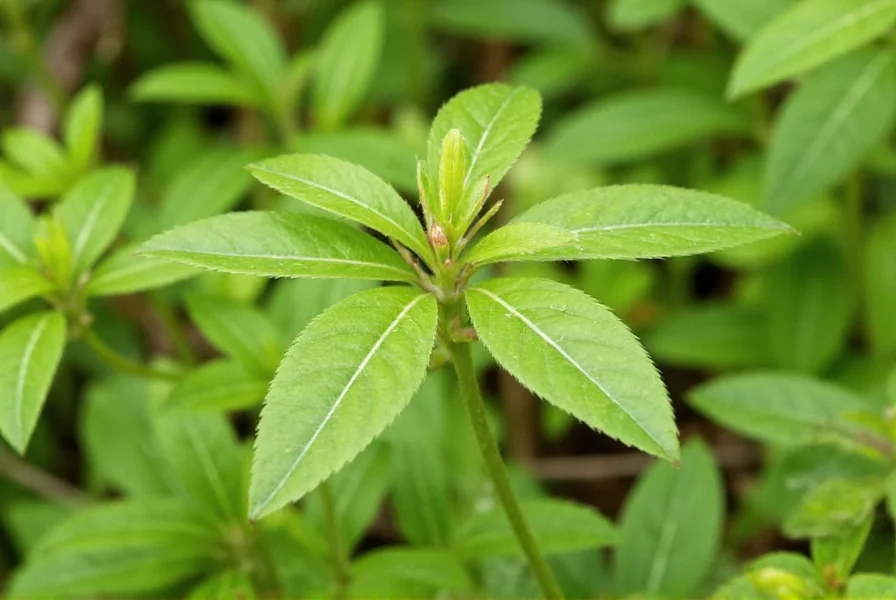Understanding chinese bush clover identification helps gardeners and conservationists make informed decisions about this versatile yet potentially problematic plant. This comprehensive guide explores its botanical characteristics, ecological impact, and responsible management practices.
Botanical Profile of Lespedeza cuneata
Chinese bush clover, scientifically known as Lespedeza cuneata, belongs to the Fabaceae family. This perennial shrub typically reaches heights of 3-6 feet with a woody base and multiple branching stems. Its distinctive features include:
- Leaves: Trifoliate arrangement with wedge-shaped leaflets measuring 1-2 inches long
- Flowers: Small purple-pink blooms appearing in dense clusters from July through September
- Stems: Slender, upright growth habit with smooth to slightly hairy texture
- Root system: Deep taproot with extensive lateral roots reaching up to 10 feet
- Seeds: Small, oval-shaped pods containing 1-2 hard-coated seeds per pod
The plant's chinese bush clover characteristics make it particularly resilient in challenging environments. Its deep root system allows it to withstand drought conditions that would stress many native species. The hard seed coat enables seeds to remain viable in soil for up to 20 years, contributing to its persistence in established areas.

Natural Habitat and Geographic Distribution
Originally native to China, Japan, and Korea, Lespedeza cuneata was introduced to the United States in the late 19th century. Early agriculturalists valued it for chinese bush clover nitrogen fixation properties and soil conservation potential. Today, it has established populations across much of the eastern and central United States, with particularly dense concentrations in the Midwest and Southeast.
This species thrives in disturbed areas including:
- Roadside corridors and rights-of-way
- Abandoned agricultural fields
- Pastures and overgrazed lands
- Open woodland edges
- Stream banks and floodplains
| Characteristic | Chinese Bush Clover | Native Lespedeza Species |
|---|---|---|
| Flower Color | Purple-pink | Typically pale pink or white |
| Stem Texture | Woody base, smooth stems | Herbaceous, often hairy stems |
| Leaf Shape | Wedge-shaped (cuneate) | Rhomboid or oval |
| Root System | Deep taproot with extensive laterals | Shallower fibrous roots |
| Seed Longevity | Up to 20 years | Typically 2-5 years |
Ecological Impact: Benefits and Concerns
The ecological story of chinese bush clover presents both advantages and challenges. Understanding its dual nature helps land managers make informed decisions about its presence.
Positive Contributions
When properly managed, chinese bush clover benefits include:
- Nitrogen fixation: Adds 50-100 pounds of nitrogen per acre annually to depleted soils
- Erosion control: Stabilizes soil on slopes and disturbed areas through dense root networks
- Wildlife habitat: Provides cover for small mammals and nesting birds
- Forage value: Offers moderate-quality browse for livestock, especially during summer droughts
- Pollinator support: Attracts bees and other beneficial insects during mid to late summer
Invasive Potential and Management Challenges
The question is chinese bush clover invasive requires careful consideration. While not classified as invasive in all regions, it demonstrates concerning behavior in many ecosystems:
- Forms dense monocultures that exclude native plant species
- Alters soil chemistry through nitrogen enrichment, favoring non-native species
- Outcompetes native legumes crucial to local food webs
- Reduces plant diversity in established areas by up to 70%
- Presents management challenges due to long-lived seed bank
Land managers should assess local conditions before introducing or controlling this species. In regions where it has become problematic, implementing chinese bush clover control methods becomes necessary.
Practical Applications and Responsible Management
Chinese bush clover serves multiple purposes when used appropriately. Understanding its various applications helps determine whether to encourage or control its growth.
Agricultural and Conservation Uses
When managed responsibly, this plant offers several agricultural benefits:
- Cover cropping: Improves soil structure in degraded agricultural lands
- Forage production: Provides supplemental grazing during summer months
- Mine reclamation: Stabilizes soils on disturbed mining sites
- Wildlife plots: Offers food and cover when integrated with native species
For agricultural applications, proper management prevents unwanted spread. Rotational grazing, timely mowing before seed set, and containment barriers help maintain beneficial uses without ecological damage.
Traditional Medicinal Applications
In its native range, chinese bush clover in traditional medicine has a long history of use. Traditional Chinese medicine practitioners have employed it for:
- Reducing inflammation
- Treating digestive disorders
- Addressing respiratory conditions
- Managing skin irritations
Modern research continues to investigate these traditional applications, though scientific validation remains limited for many claimed benefits.
Effective Control Strategies
When chinese bush clover control methods become necessary, land managers have several options:
- Mechanical control: Repeated mowing before flowering prevents seed production
- Prescribed burning: Dormant season burns reduce above-ground biomass
- Biological control: Certain insects show promise for targeted management
- Chemical control: Selective herbicides applied at proper growth stages
- Competitive planting: Establishing dense native plant communities
Successful management typically requires an integrated approach combining multiple techniques over several years due to the persistent seed bank.

Making Informed Decisions About Chinese Bush Clover
Landowners and conservationists face important choices regarding this adaptable plant. The decision to encourage or control chinese bush clover should consider:
- Local ecosystem sensitivity and native biodiversity
- Existing plant community composition
- Soil conditions and erosion risks
- Management capabilities and resources
- Regional regulations regarding non-native species
When evaluating chinese bush clover for wildlife benefits, consider that while it provides some habitat value, native plant communities generally support significantly more diverse and abundant wildlife populations. The key lies in balanced management that acknowledges both benefits and potential drawbacks.
Frequently Asked Questions
Is Chinese bush clover the same as sericea lespedeza?
Yes, Chinese bush clover (Lespedeza cuneata) is commonly known as sericea lespedeza. The terms refer to the same plant species, with "sericea" describing the silky hairs on young stems and leaves.
Can Chinese bush clover be used for erosion control without becoming invasive?
Chinese bush clover can provide effective erosion control when properly managed. To prevent invasiveness, implement containment strategies like physical barriers, regular monitoring, and timely mowing before seed set. Many conservation professionals now prefer native alternatives for long-term erosion control projects.
How does Chinese bush clover affect native pollinators?
Chinese bush clover provides nectar for generalist pollinators during mid to late summer when few native plants are flowering. However, it doesn't support specialized native pollinators as effectively as regionally appropriate native plants. In areas where it forms dense stands, it may reduce overall pollinator diversity by displacing native flowering plants.
What are the best native alternatives to Chinese bush clover for soil stabilization?
Native alternatives for soil stabilization include purple prairie clover (Dalea purpurea), round-headed lespedeza (Lespedeza capitata), and various native grasses like switchgrass (Panicum virgatum) and big bluestem (Andropogon gerardii). These species provide similar erosion control benefits without the invasive potential.
How long does Chinese bush clover seed remain viable in soil?
Chinese bush clover seeds can remain viable in soil for up to 20 years. This long-lived seed bank makes eradication challenging, as new plants can emerge from dormant seeds long after visible plants have been controlled. Successful management requires persistent efforts over multiple growing seasons.











 浙公网安备
33010002000092号
浙公网安备
33010002000092号 浙B2-20120091-4
浙B2-20120091-4